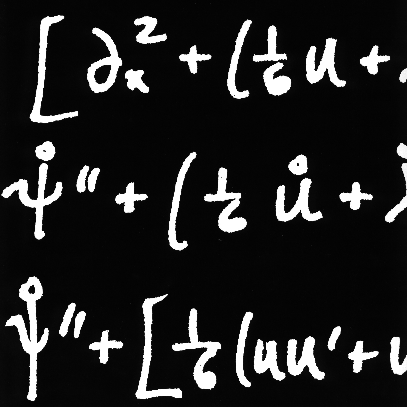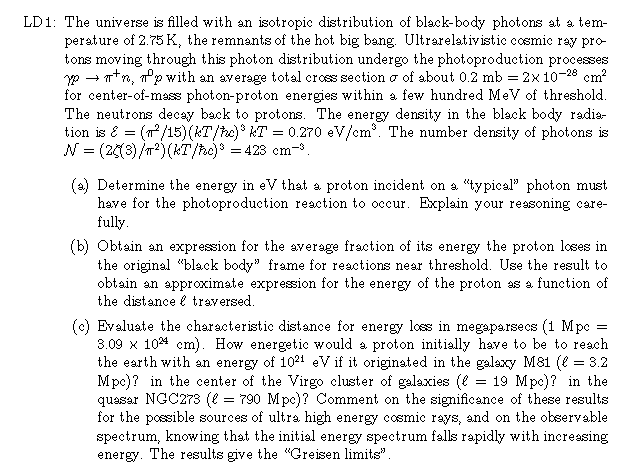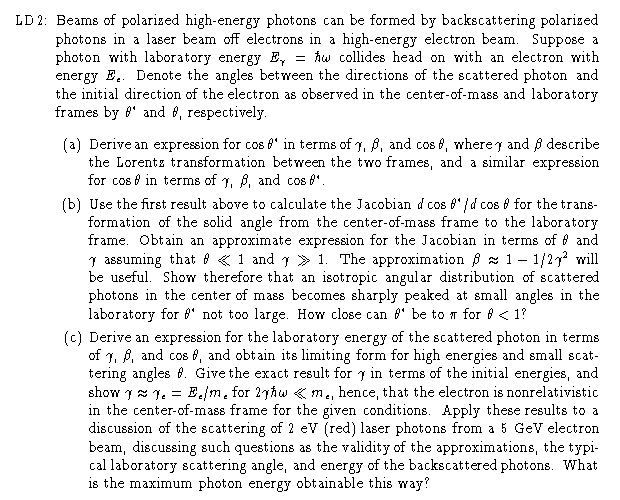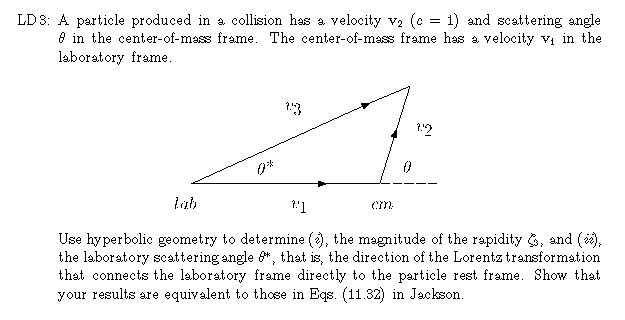 .
.
-

Hint: In the addition to 11.10(b), show that the matrix you obtain agrees with Eq. 11.98, then consider the action of the matrix on a four vector x to get x', determine the components to the latter, and compare with the expression in Eq. 11.19.

-

The effect of the 2.75 K black body background radiation on the cosmic ray spectrum was first discussed by K. Greisen, Phys. Rev. Letters 16, 748 (1966) and by G.T. Zatsepin and V.A. Kuz'min, Sov. Phys. JETP Letters 4, 78 (1966). The limits present a problem in explaining the origin of the highest energy cosmic rays observed.

-

In part (ii), you will want to find the tangent of the scattering angle. The hyperbolic results are simple. To relate them to the results in Jackson, rewrite them in terms of velocities and  factors and use the relation between v² and
factors and use the relation between v² and
 ².
².

-

Particle distributions in high-energy collider detectors are commonly plotted in terms of  and the azimuthal angle
and the azimuthal angle
 around the beam direction. The maximum energy of pions
produced in the Fermilab proton-antiproton collider is 900 GeV, corresponding
to a true rapidity
around the beam direction. The maximum energy of pions
produced in the Fermilab proton-antiproton collider is 900 GeV, corresponding
to a true rapidity  equal to 9.5, with most particles
at considerably small values. While the psuedorapidity diverges for
vanishing transverse momentum (small angles),
the approximation
equal to 9.5, with most particles
at considerably small values. While the psuedorapidity diverges for
vanishing transverse momentum (small angles),
the approximation  breaks down when the transverse momentum is small
relative to the particle mass. The difference is generally not important
practically.
breaks down when the transverse momentum is small
relative to the particle mass. The difference is generally not important
practically.
Send comments or questions to: ldurand@theory2.physics.wisc.edu
FURTHER OPTIONS:
- WHAT'S NEW
- COURSE INFORMATION
- SYLLABUS
- HOMEWORK ASSIGNMENTS
- EXAMS
- WISCONSIN THEORY HOME PAGE
© 1997, 1998 Loyal Durand